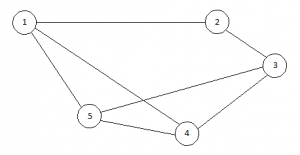As our world becomes more complex, fields of expertise are becoming more and more specialised. As knowledge grows, the amount any one person can be an expert in gets smaller. This means that now, more than ever, collaboration is the name of the game. You might like to take a look at Sciencemag’s article on successful collaboration, or the European Science Foundation’s publication on mathematics in industry.
There are no shortage of success stories demonstrating the applicability of mathematics to science and industry. As one of the most fundamental and abstract subjects, mathematics may be without peer in the broadness of its applications. Perhaps for no other discipline is it so important to form lines of communication and collaboration with other experts. And as the world becomes increasingly technically sophisticated, this fact will become ever more true. It’s important for both sides to determine a strategy through which mathematicians and other experts can strengthen their interactions to prepare for our highly technological future.
It sometimes doesn’t occur to people that their industry should seek the the expertise of mathematicians. Sometimes, this is because mathematics in their industry is working its magic under a different name or job title, such as engineer. They may not even be aware that there is such a thing as a math consultant, and therefore unlikely to seek one out. The completion of a PhD in a field of mathematics not only qualifies the holder within that field, but testifies to an ability to think creatively and solve difficult problems. Ironically, these skills make mathematicians the ideal consultants – even for problems that are not explicitly mathematical. They lend themselves so well to applied research and development tasks that the concept of a math consulting firm should be part of the lingo.
Encouragingly, surveys have found that managers express enthusiasm for collaborating with mathematicians, and genuinely believe that mathematics can provide them with a competitive edge. Yet, their own lack of familiarity with mathematics can make it difficult for them to drive the interaction from their side, and to generate project ideas.
So how can math consultants and other professionals improve collaboration?
- Both sides should work to build professional connections with each other, even before any possible collaborative projects are apparent to either side. These connections may yield unforeseen fruit in the future.
- Scientists, engineers and other professionals should discuss with mathematicians problems they are working on or facing in their fields. After all, you never know what value they may be able to add if they were only aware of the problem!
- Since other professionals may not know enough about what mathematicians do to realise when they are needed, math consultants may need to “take it to them”. Mathematicians need to invest time in learning about the work being done in science and industry, and develop their own project proposals to present to industry leaders.
- Many businesses and teams do not include a mathematician who would have the skills to solve difficult quantitative problems that arise in their field. Historically, this made it difficult for collaboration to occur. And increasing specialisation means teams would get larger and larger if they needed a permanent team member for every area of expertise that arises. Fortunately, the internet has created an unprecedented flexibility for working which means that you needn’t employ a full-time mathematician to reap the benefits. The expertise you need is only a few clicks away. Industry professionals should embrace online consulting as a convenient and cost-effective way to tap into the expertise of mathematicians


